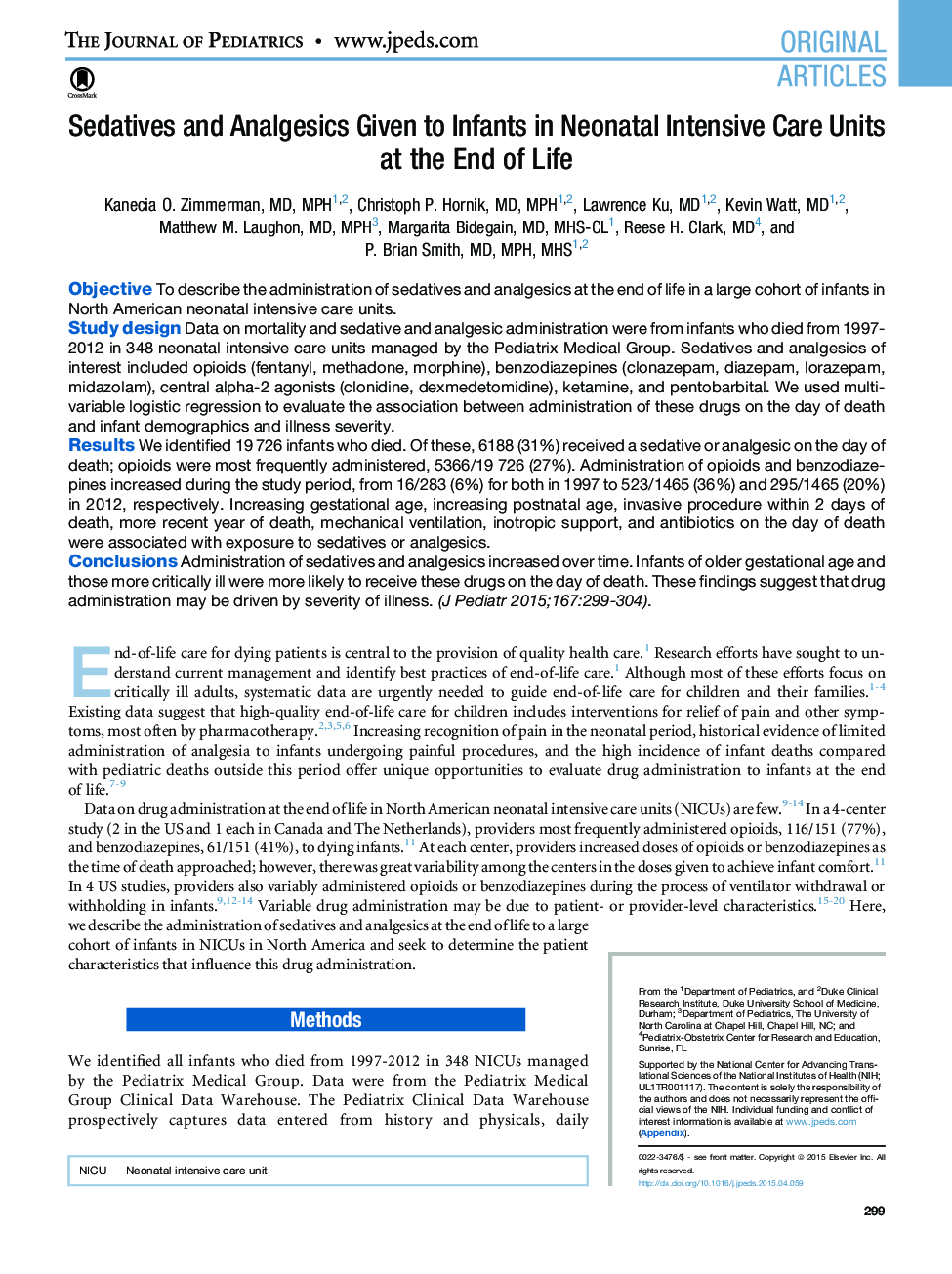| Article ID | Journal | Published Year | Pages | File Type |
|---|---|---|---|---|
| 6220453 | The Journal of Pediatrics | 2015 | 9 Pages |
ObjectiveTo describe the administration of sedatives and analgesics at the end of life in a large cohort of infants in North American neonatal intensive care units.Study designData on mortality and sedative and analgesic administration were from infants who died from 1997-2012 in 348 neonatal intensive care units managed by the Pediatrix Medical Group. Sedatives and analgesics of interest included opioids (fentanyl, methadone, morphine), benzodiazepines (clonazepam, diazepam, lorazepam, midazolam), central alpha-2 agonists (clonidine, dexmedetomidine), ketamine, and pentobarbital. We used multivariable logistic regression to evaluate the association between administration of these drugs on the day of death and infant demographics and illness severity.ResultsWe identified 19â726 infants who died. Of these, 6188 (31%) received a sedative or analgesic on the day of death; opioids were most frequently administered, 5366/19 726 (27%). Administration of opioids and benzodiazepines increased during the study period, from 16/283 (6%) for both in 1997 to 523/1465 (36%) and 295/1465 (20%) in 2012, respectively. Increasing gestational age, increasing postnatal age, invasive procedure within 2Â days of death, more recent year of death, mechanical ventilation, inotropic support, and antibiotics on the day of death were associated with exposure to sedatives or analgesics.ConclusionsAdministration of sedatives and analgesics increased over time. Infants of older gestational age and those more critically ill were more likely to receive these drugs on the day of death. These findings suggest that drug administration may be driven by severity of illness.
